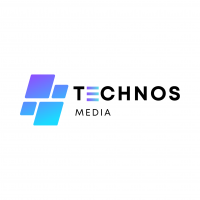Mastering Mission Control Productivity: The Three States of Completion

Strong 8k brings an ultra-HD IPTV experience to your living room and your pocket.
In today's fast-paced world, productivity is a key priority for individuals and organizations alike. Whether in business, education, or personal development, effective task management determines success. One powerful framework that has gained attention is Mission Control Productivity, a system inspired by NASA's Mission Control Center. This approach emphasizes structured task management through the "Three States of Completion." In this article, we will explore how this framework enhances efficiency, eliminates confusion, and fosters accountability.
What Is Mission Control Productivity?
Mission Control Productivity is a structured system that helps individuals and teams manage their workload efficiently. Inspired by NASA’s methodology, it offers a clear and organized approach to task completion.
At its core, this system focuses on:
Breaking down complex tasks: Large workloads are divided into manageable steps.
Maintaining a centralized dashboard: A structured system tracks all progress in one place.
Identifying the Three States of Completion: These states provide clarity on task progress and eliminate uncertainty.
Understanding the Three States of Completion
A key feature of the Mission Control Productivity framework is its emphasis on the Three States of Completion. These stages help individuals and teams set priorities, streamline work, and boost efficiency.
1. Not Started
This category includes tasks that have been identified but not yet initiated. A study by Asana (2022) found that nearly 40% of employees struggle with productivity due to unclear priorities. Clearly marking tasks as "Not Started" helps individuals and teams focus on upcoming work without confusion.
For instance, a marketing team preparing for a product launch might create a task list including "Draft press release," "Design ad creatives," and "Schedule social media posts." Labeling these as "Not Started" ensures transparency and prioritization.
2. In Progress
Tasks labeled as "In Progress" are actively being worked on. The Mission Control system encourages a disciplined approach by minimizing multitasking and promoting focused work. Research by the American Psychological Association (APA) suggests that multitasking can reduce productivity by up to 40%.
For example, a software development team using project management tools like Trello or Jira can assign tasks to "In Progress," allowing team members to track responsibilities and prevent work overlap.
3. Complete
The final stage, "Complete," signifies that a task has been fully executed. According to Harvard Business Review, completing tasks triggers dopamine release, increasing motivation and a sense of accomplishment.
For instance, a teacher planning a semester curriculum can mark lesson plans as "Complete" once finalized. This helps track progress and ensures all objectives are met on time.
Why the Three States of Completion Matter
1. Reducing Ambiguity
A clear task structure eliminates confusion and enhances focus. Best-selling author David Allen emphasizes that productivity stems from clarity. By defining each task stage, Mission Control Productivity removes uncertainty and promotes efficiency.
2. Prioritizing Effectively
Using the Pareto Principle (80/20 rule), the system directs attention to the most impactful tasks. By clearly distinguishing tasks between "Not Started," "In Progress," and "Complete," teams can allocate time and resources efficiently.
3. Enhancing Accountability
Task transparency helps assign responsibility and track progress. Research from Monday.com found that teams using visible task-tracking systems experience a 23% higher project success rate.
Real-World Applications of Mission Control Productivity
1. NASA’s Apollo 11 Mission
NASA successfully executed the 1969 moon landing by applying a Mission Control approach. Each phase of the mission was broken down into manageable tasks with clear completion states. This systematic method contributed to one of the greatest achievements in space exploration.
2. Corporate Workflow Management
Major companies like Google implement productivity frameworks similar to Mission Control. Google’s Objective and Key Results (OKR) system categorizes tasks and tracks progress, ensuring teams align their efforts with company objectives.
3. Personal Productivity
Emma Rodriguez, a freelance designer, adopted Mission Control Productivity using Asana to categorize tasks. In six months, she reduced project timelines by 30% and increased her client base by 15%—demonstrating the effectiveness of structured task management.
How to Implement Mission Control Productivity
To integrate this framework into your workflow, follow these steps:
List all tasks: Use tools like Notion or ClickUp, or write them down on a whiteboard.
Categorize tasks: Assign them to "Not Started," "In Progress," or "Complete."
Utilize productivity tools: Platforms like Trello, Asana, and Monday.com enhance tracking.
Set realistic deadlines: The Eisenhower Matrix helps differentiate between urgent and important tasks.
Review regularly: Weekly evaluations ensure continuous improvement and adaptability.
Conclusion
The Mission Control Productivity system, built around the Three States of Completion, provides a structured and practical approach to managing workloads. By reducing ambiguity, enhancing focus, and fostering accountability, this framework helps individuals and teams achieve their goals efficiently. Whether applied in business, education, or personal projects, Mission Control Productivity offers a proven method to optimize productivity and success.
Note: IndiBlogHub features both user-submitted and editorial content. We do not verify third-party contributions. Read our Disclaimer and Privacy Policyfor details.


